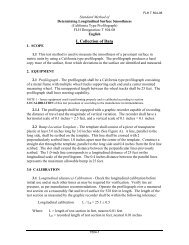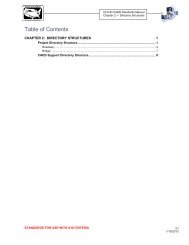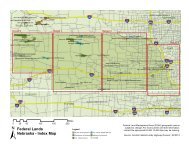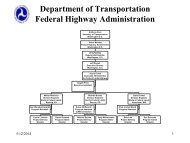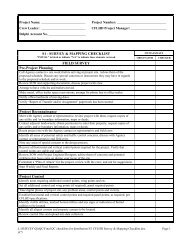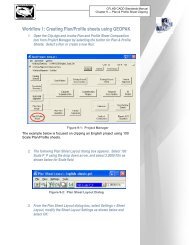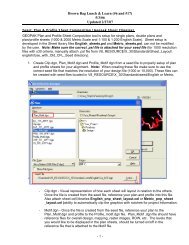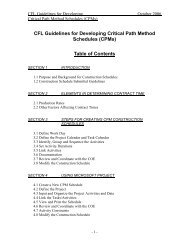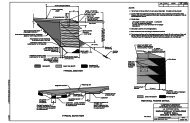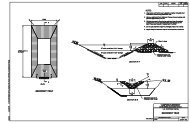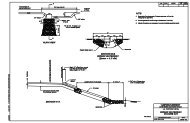CHAPTER 2 BARRIER WARRANTS
CHAPTER 2 BARRIER WARRANTS
CHAPTER 2 BARRIER WARRANTS
Create successful ePaper yourself
Turn your PDF publications into a flip-book with our unique Google optimized e-Paper software.
Barrier Warrants ________ November 2005At speeds of 40 km/h (25 mph) or lower, right-of-way is usually very restricted androadside safety issues may not be a major design priority. In these cases it may beappropriate to eliminate or minimize the need for a clear zone if a vertical curb with aheight of 150 mm (6 in) or higher is present. A minimum horizontal clearance of 0.5m (1.5 ft) should be provided beyond the back of the curb.At speeds of 50 km/h (30 mph) to 70 km/h (45 mph), the presence of curbs may be aconsideration for using the minimum clear zones in the ranges shown in Table 2.1 ofthis guide.At speeds of 80 km/h (50 mph) or higher, curbs will vault a vehicle causing it tobecome airborne. The severity of the vaulting is a function of the height of the curband the slope of the face. If curbs with a height of 150 mm (6 in) or higher arepresent, the higher end of the clear zone range should be selected.2.2.6 Application of the Clear ZoneThe following list includes some helpful considerations for the selection of the clearzone:The RDG clear zone recommendations are based on limited research, along withengineering judgment and experience. The clear zones as recommended in theRDG and in Table 2.1 of this guide are approximate ranges and are not precise. Thedesigner must also consider site-specific conditions, operating speeds, location andpracticality.At very low volumes (under 400 ADT), it is common that rights-of-way are restricted,there are an overwhelming number of hazards and very little funds are available forcorrective actions. Thus clear zones may appear impractical. Nevertheless, in thesecases the clear zone concept can be used to make the roadway as safe as possible.As a minimum, a traversable consistent shoulder should be provided. As much aspossible of the recommended clear zone (which is relatively small for low volumeconditions) found in Table 2.1 should be provided. Figure 2.2 illustrates a lowvolume road with minimum clear zones. The use of the warranting process for theconditions discussed in this chapter helps identify the most serious hazards close tothe roadway that may justify corrective actions. The barrier warranting proceduretakes very low ADT conditions into account.The approximate center of the range is suggested for average conditions. The highend of the range is appropriate for sites with higher risk conditions and the low endfor less severe conditions.Vehicles can and will encroach beyond the recommended clear zones. If severehazards exist beyond these clear zones, they should be considered for protection. Design speed should be used to determine the clear zone. When the design speedis unknown, it may be appropriate to use the posted speed. If the operating speed isgreater than the design and posted speeds, it may be more appropriate to use theoperating speed.________________________________________________________________________2-6 Determine the Needed Clear Zone



